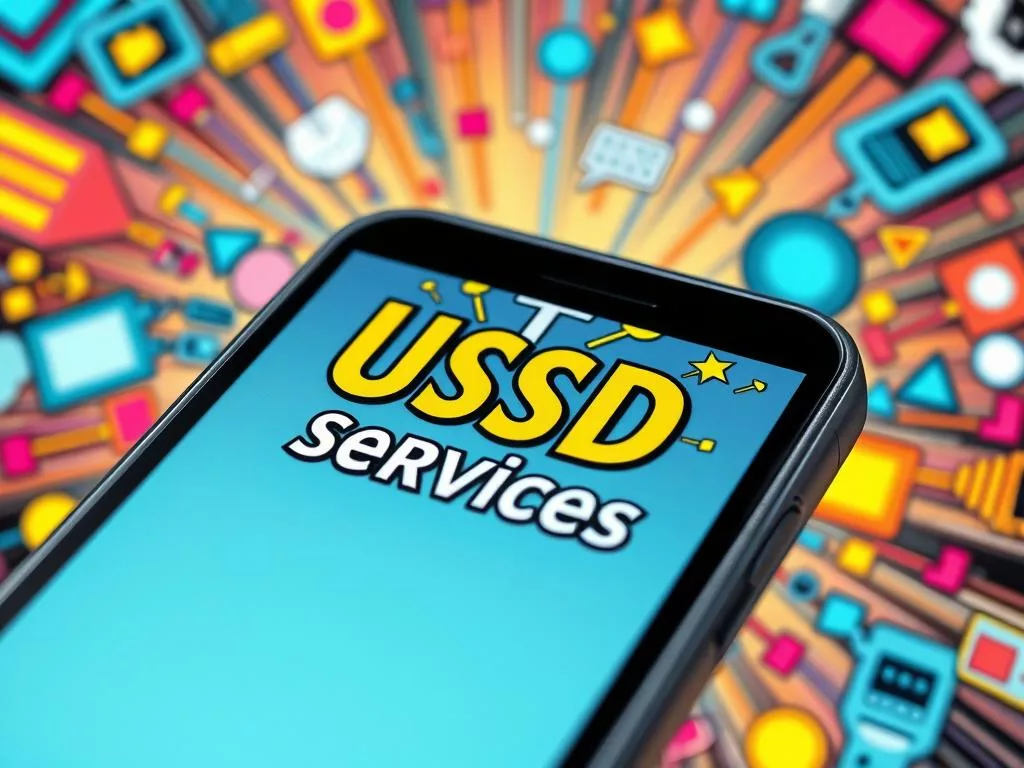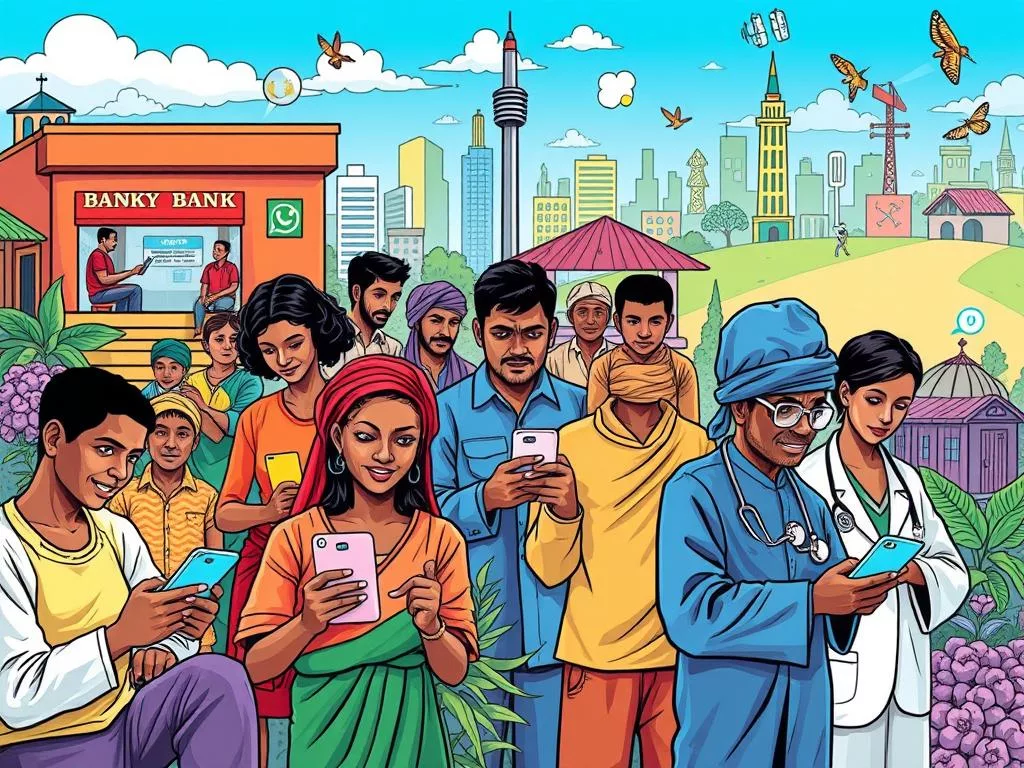Unstructured Supplementary Service Data (USSD) is a key part of mobile communication. It lets phones send text to service providers’ networks. Unlike SMS, USSD is for quick, interactive tasks like mobile banking.
USSD messages go straight through the network, making communication fast. It starts with symbols like * or # and can send up to 160 characters. It works on all GSM phones worldwide, making it very useful.
In places with little or expensive internet, USSD codes are very helpful. For example, *#06# shows device info, including eSIM support. This service gives quick results without needing the internet.
Interactive USSD services make a live connection between users and providers. This lets for real-time information exchange.
USSD is used to check eSIM support in many phones. Android users can find their EID in Settings > About phone. iPhone users go to Settings > General > About. If there’s no EID, the device might need a physical SIM or an eSIM upgrade.
What is Unstructured Supplementary Service Data (USSD)?
Unstructured Supplementary Service Data (USSD) is a GSM protocol for sending text messages in real-time. It connects a mobile phone to network applications. Users can do many things instantly by dialing a specific code, like *123#.
USSD services are very useful. They help with network settings and even banking. You can check your balance, top up your phone, and more. This makes things easier and faster for everyone.
USSD messages start with an asterisk (*) or a hash (#) and end with a hash (#). They can have up to 160 characters. This makes USSD work well on many mobile networks.
USSD is great because it doesn’t need the internet. This is very helpful in places where the internet is not stable. Businesses use it for customer feedback and quick transactions. It helps make banking easier and more accessible.
USSD codes are stored in SIM cards, so they work on most phones. Even as 2G and 3G networks are being shut down, USSD is staying useful. It’s a reliable way to communicate for many services.
USSD is used all over the world because it’s easy to use. It changes how we use mobile services. It makes communication faster, cheaper, and more efficient.
| Feature | Description |
|---|---|
| Initiation | Primarily through sequences like *123# |
| Characters Limit | Messages: up to 160 alphanumeric characters, Responses: up to 182 characters |
| Dependency | Does not require an internet connection |
| Applications | Balance inquiries, mobile top-ups, network services, surveys, financial transactions, etc. |
| Real-time Interaction | Session-based for immediate two-way communication |
Guide to unstructured supplementary service data
Unstructured Supplementary Service Data (USSD) lets users interact with services on their phones in real-time. It’s mainly used in places like Kenya, Nigeria, Uganda, and Tanzania. Users can do things like mobile banking, check balances, and get health info without the internet.
To start a USSD session, dial a code that starts with an asterisk (*) and ends with a hash (#). This opens a text-based chat where users can choose from menus.  The messages are short, with 182 characters max, making it quick and easy.
The messages are short, with 182 characters max, making it quick and easy.
USSD is big in mobile banking. It helps with tasks like checking balances and sending money. For example, users can see their bank balance or send money through simple menus. This shows how important USSD is for banking, even without the internet.
Developers can make USSD apps using languages like PHP, Python, and Java. PHP is popular because it’s easy to use. Africa’s Talking offers APIs for easy USSD app development.
Starting a USSD app costs a few thousand dollars for basic ones. More complex apps cost more. For those who don’t code, Helloduty has tools like Click and Config Studio for easy app making.
It’s important to keep an eye on USSD services to ensure they work well. Watch the success rate, how often users use it, and error rates. This helps fix problems fast, keeping users happy and services reliable.
USSD is cheaper than SMS and data services. It’s fast, meeting today’s fast-paced needs. It also helps more people, even in areas without smartphones or internet.
Overall, using USSD offers many benefits. It’s a key tool for services, making sure everyone can access them, even in areas with little tech.
- Verify Balance
- Money Transfer
- Purchase Airtime
- Exit
| USSD Application Development | Provider | Highlight | Target Audience |
|---|---|---|---|
| Africa’s Talking | API Integration | Developers preferring deep technical control | |
| Helloduty | Click and Config Studio | Individuals and businesses with minimal programming experience |
Applications and Advantages of USSD
USSD offers many benefits, mainly in situations where quick and effective communication is needed. It’s great for setting up networks and creating customer service menus. This tech is key in USSD customer engagement, helping businesses connect with customers and get feedback.
In finance, USSD is a big deal. It’s used for mobile banking and payments. Customers can check balances, send money, and pay bills without the internet. It’s cheaper and easier than traditional banking, perfect for those without smartphones or internet.
USSD is also known for its real-time, two-way communication. It’s super useful in customer service, allowing for quick interactions and confirmations. It works on basic phones and doesn’t need data, making it great for areas with bad internet.

USSD is also great for engaging with customers. Businesses can use it for promotions, sending out info and offers right away. This keeps customers interested and informed about the brand.
To make USSD better for customers, businesses should focus on simple menus and use analytics. They should also support many languages and offer context and pre-filled options. When designing USSD apps, simplicity, security, and usability are key for a good user experience.
In summary, USSD is vital in today’s communication world. It helps improve efficiency and customer happiness in many areas.
Drawbacks and Challenges of USSD
USSD has many benefits and is widely used. Yet, it faces some big challenges. One major issue is its short message limit of 182 characters. This makes it hard to send detailed messages or multimedia content.
USSD also relies on older 2G and 3G networks. As we move to newer 4G and 5G networks, this becomes a big problem. It could make USSD less useful in places that are switching to newer networks.
Network congestion can also slow down USSD services. The simple text interface might seem old-fashioned compared to today’s apps. This could make users less interested, which is a problem in areas with lots of smartphones.
For example, in Kenya, banks use USSD for services like MPESA loans. But, the limits of USSD are clear. It’s a useful tool, but it needs to keep improving.
In conclusion, USSD is good for quick communication. But, we need to keep working on it. For more details, check out a study on USSD in Malawi. As we move to better networks, we must think about USSD’s future carefully.

